Right on schedule, the Iskandar Malaysia Bus Rapid Transit (IMBRT) has entered its pilot testing phase today, officiated by Johor chief minister Datuk Hasni Mohammad. The high-capacity electric bus passed through Persiaran Puteri Selatan, Jalan Laksamana 1 and 2 and Persiaran Dato’ Seri Amar before returning to the starting point.
As previously reported, the three-month programme will test the buses’ capabilities and demonstrate the use of green technology, in line with the southern state’s modernisation of its public transport system. The Iskandar Regional Development Authority (IRDA) and other agencies will test electric and biodiesel (previously reported as hybrid) buses from nine local and international suppliers, conducting assessments, collecting feedback on their effectiveness and safety and securing approval for their use.
Hasni said that the project is important to increase the mobility of Johoreans. “This service will ensure an efficient, convenient and environmentally-friendly public transportation system, covering a wide range of areas,” he said. “I am confident that it will be a catalyst for development, not only for the Iskandar Malaysia area, but for the entire state of Johor.”
Adding to this, IRDA chief executive Datuk Ismail Ibrahim emphasised the importance of an efficient and integrated public transport infrastructure in attracting foreign and domestic investments – hence increasing the attractiveness of the development corridor. “This IMBRT project is expected to create up to 35,000 jobs and increase Gross Domestic Product (GDP) for Johor,” he said.
The project is said to have identified feeder, direct and main routes that reach 2,043 kilometres or around 90% of Iskandar Malaysia’s populated areas. Once fully implemented, the IMBRT will be able to connect 55 feeder routes and 44 direct routes with the main route and its 33 stations.
The first automated rapid transit (ART) buses arrived in Malaysia in January for the pilot testing programme, which was originally planned for 2020 but was delayed due to the coronavirus pandemic. The ART system is said to enable a higher passenger capacity at a lower cost compared to light-rail transit (LRT) trains and will be able to run on clean energy sources such as electricity or hydrogen.
The vehicles, produced by KTM Intercity carriage manufacturer China Railway Construction Corporation (CRCC), have a capacity of more than 300 passengers across three carriages, according to a previous report by The Edge Markets. With an additional two carriages, the passenger capacity can be increased to 500.
The buses have a top speed of 70 km/h and is capable run autonomously by reading virtual tracks using its sensors, although a driver can still operate the vehicles – as was the case during the pilot. The ART was supplied by Mobilus, a 51:49 joint venture between Ireka Corporation and CRRC Urban Traffic.
- C:DCIM100GOPROGOPR0195.GPR
Looking to sell your car? Sell it with Carro.

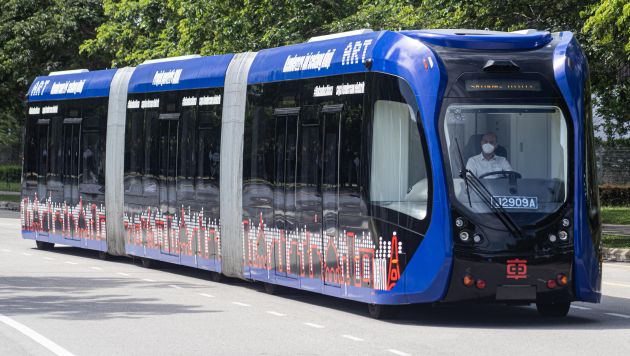
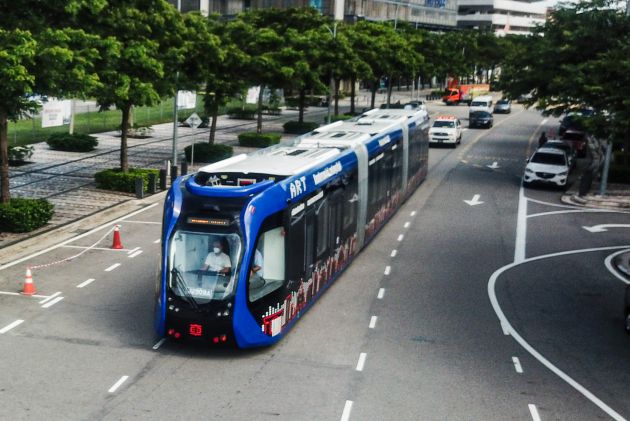


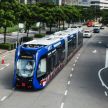
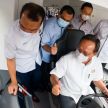
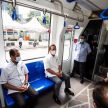

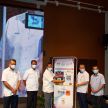
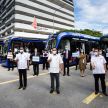













Good work Johor. Senyap-senyap berisi. Don’t talk that much, but we can see progress.
Go up north to Penang, talk until pig can fly but terowong still nothing.
When pigs rule the farm, that’s all up there.
Read: Animal Farm
The main problem of public transport in southern Johor is infrequent departures. If you buy new vehicles or increase the capacity of the vehicles, but they still depart once every 30 minutes, you still won’t get passengers. With a car, 30 minutes are enough to get to the destination already. Who will wait 15-30 minutes for public transport and then spend another 45 minutes on it? You may say, because there are poor people. But come on, a used car is only 3000 MYR here, and fuel consumption is maximum 0.20 MYR per kilometer. There are very few who cannot afford. And those who have so much time to spend are very few. The result? Public transport is empty, so you reduce the frequency even further to avoid wastage (like in the past few years, one departure every 1 to 2 hours). Then there will be even fewer passengers.
Kinda agree with this. In order for public transport to work, it has to be “cheaper” than personal transport.
Money is money, time is also money. Total cost would need to convert time to money for calculation. How much one’s time is worth is totally depending on that person.
In case anyone wonder, yes I love public transport but I can’t blindly support it either.
Why waste money? Cant even fill the bus right now. If the current bus service is beyond capacity by all means do it. Johorean loves their cars with its loud noise and oversized wheels. The only viable public transport there is either out to singapore or to TBS. With covid, there are none.
I predict this will be an absolute failure. A tram wld have been more suitable. Time will tell.
This is a tram, take a good look at the blue snake. This is very similar to the tram system i always used in Melbourne. Very farsighted for Johor Govt to approach this.
A tram runs on rails.
There are trackless trams but otherwise known also as trolleybus. A tram is still a tram.
Autonomous Rail Rapid Transit (ART) is a railless guided bus system. The product has been described as a crossover between a train, a bus and a tram.[12] Its external appearance, composed of individual, fixed sections joined together by articulated gangways, resembles a rubber-tyred tram
This is a tram bus. It is a tram but instead of running on rails, it uses normal roads.
This suited to Malaysian driving style. Track will get blocked. This still can change direction some what
I predict this will be an absolute failure. Tram wld hv been more suitable.
no need 300 pax/bus.enuff with 40 BUT every 10 minutes.
basically a very long bus that runs on clean energy. as it will share the roads with others, it will also be subjected to traffic jams, traffic collision and possibly floods too. it might be “the solution” in an ideal setting. ..want to provide more jobs? a large fleet of smaller green energy buses at high frequency. the last mile connectivity too needs to be looked into. are the walkways from the residence to the bus stops safe? we need to look at every step of the system…